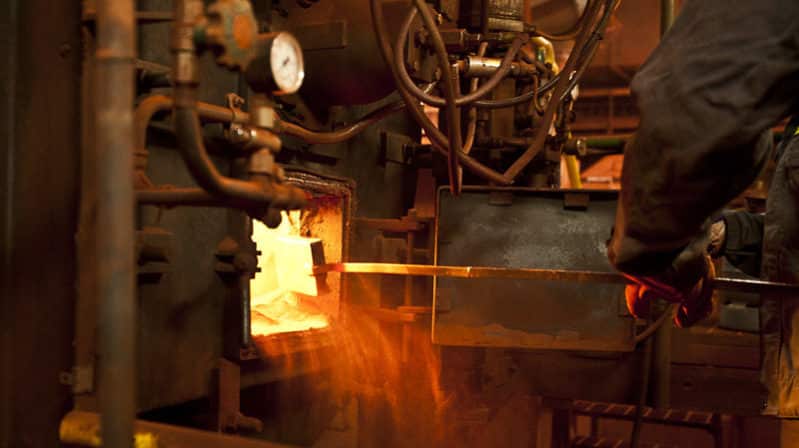The pigment used in Falu Rödfärg comes from ore-mining in the Falun Mine. The ore from the mine is hand-sorted, and stones with too low a copper content are put to the side in what are known as waste heaps. Iron oxide, which gives the pigment its red colour, is caused by the presence of iron, pyrite, pyrrhotite and chalcopyrite in the ore. When ironbearing minerals decompose, a limonite is formed which is yellow or ochre in colour.
Watch the video about the unique pigment. (Swedish).
The pigment production is divided into a slurrying stage and a burning stage. In the slurrying stage, the raw material is mixed with water so that the fine, decomposed material can be washed away from the stones. The fine-grained material is then pumped into a settling basin, where it can sink to the bottom over a few months. After this, the clarified water can be pumped away so that only the sediment remains. In order to transform the limonite in the sediment, it must be dried and burned. In the drying kiln, all the water disappears at approximately 150 degrees and the sediment changes colour and begins to go from yellow to red. The material is fed from the drying kiln into the firing kiln where the pigment’s final colour will be determined. This is because its colour changes when the temperature is increased. At a temperature of 500 degrees, the limonite transforms into iron oxide and becomes light red, at 700 degrees the colour turns to a darker shade, and above 950 degrees a black shade can be expected.
Tests are performed every hour to ensure the right pigment shade is reached. After 5-7 hours in the kiln, the unground pigment is moved into silos from which it is finally fed on for grinding and storage.
